I don’t know why it struck me so, but one of the first things I noticed about the giants in Sequoia National Park is the ground immediately around their feet. Typically, very little grew close by, and the ground was blanketed by fallen foliage. The golden-brown setting made the base of the giants stand out. It also made me wonder about the roots. Although sequoia have very shallow roots, most lived just under the surface, denying a glance at potentially impressive nebari.

Sequoia trunk in Grant Grove
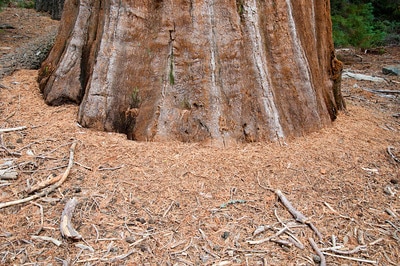
Duff at base of sequoia trunk
Many of the trees had burls or deadwood at the base, possibly signs of previous injury. The bulges below belong to the General Grant Tree.
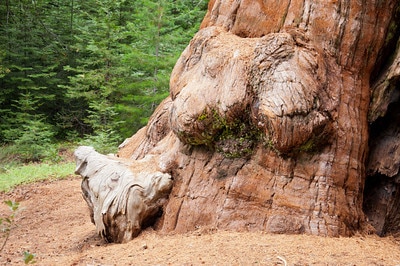
Trunk bulges – and a jin
On only one occasion did I notice a lot of moss growing on the bark. Said to grow up to 3′ thick, the bark is usually a cinnamon color. The tree below, however, supported a great collection of mosses.
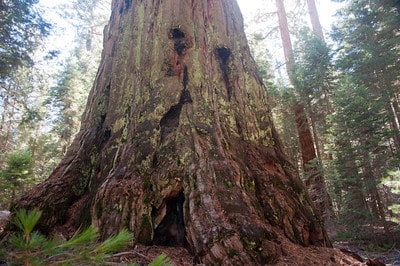
Mossy trunk
Far more common was bark like that on the tree below.
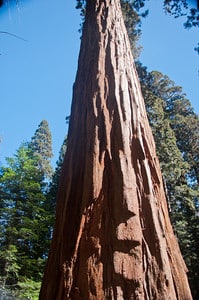
I keep seeing an Easter Island face here
Up close, the bark is relatively smooth. Some trees have deep furrows, others are smooth all the way around.
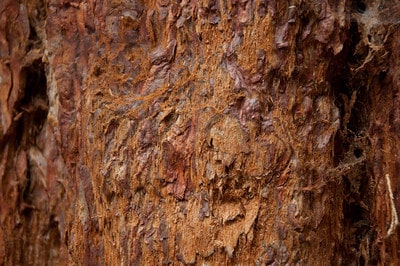
Bark texture
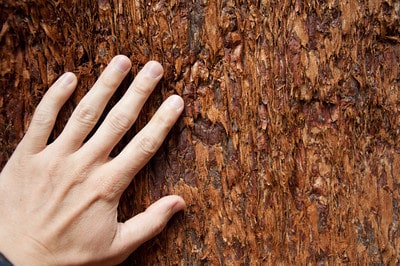
With hand for scale
Tapping the bark made a hollow sound – the last thing I expected from such powerful trees, but sensible enough considering the thickness of the bark. Up above, the lowest branches were sometimes found 100-200′ from the ground. The apices weren’t exactly what we look for in bonsai, but there’s no denying the age and character they displayed.
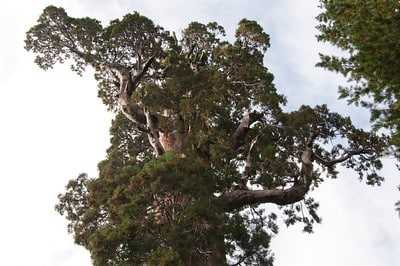
General Grant Tree apex
And all of this, from such tiny beginnings.
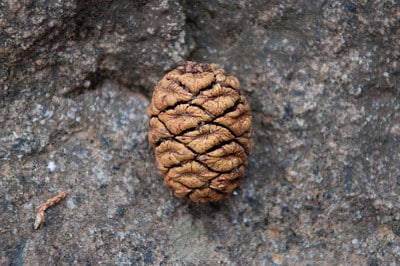
Sequoia cone less than 2″ long
Apparently, cones mature after 18 months but stay green and closed for up to 20 years (says the Wikipedia). Each cone contains 30-50 scales with several seeds per scale. This means a typical 2″ cone can contain over 200 seeds. Large trees can carry, say, 11,000 cones and disperse 300,000-400,000 seeds annually. Not a lot of these sprout. Scarification happens by beetle, squirrel and fire. Young saplings do best after fire when there is little competition for light.
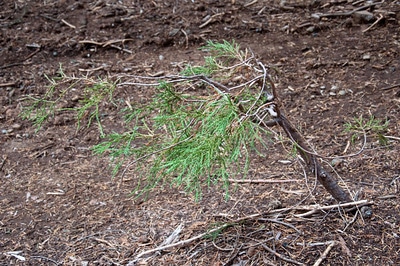
Baby sequoia
The foliage is scaly, not unlike other members of the Cupressaceae family.
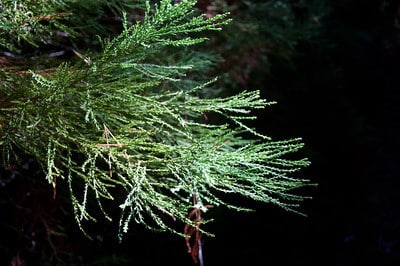
Sequoia foliage
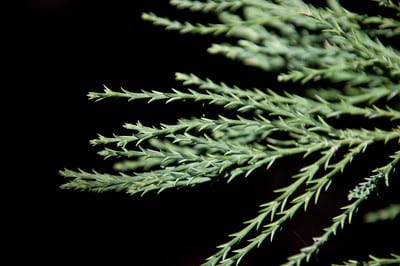
Foliage close-up
Young sequoia often grow close together. Sometimes they grow up that way.
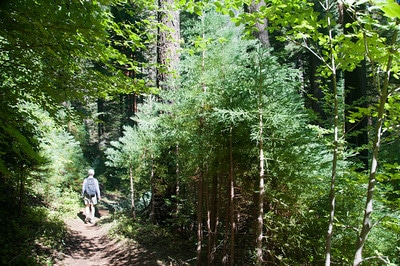
Thicket of young sequoia
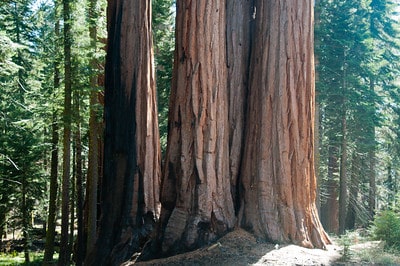
Teenage sequoia growing in close proximity
Sequoia’s massive size can help in fires that are hot enough to vaporize everything else. Thick bark and foliage high above the ground can help giant specimens survive fairly hot blazes. Throughout the Sequoia National Park, we saw evidence of recent and ongoing fires. The heat from these fires can dry and open the cones on the trees above which can then release seeds onto fertile, cleared, earth.
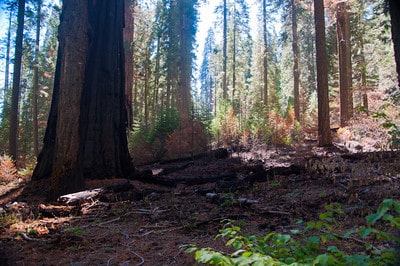
Ongoing fire damage
A large fire cleared the hillside below a few years ago which resulted in many young sequoia. This year’s fires have toasted a number of these saplings.
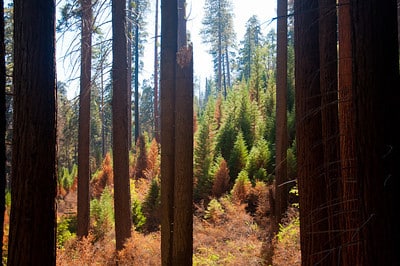
More fire damage
A surprising number of the trees had similar scars, and said scars almost always appeared on the uphill side of the trunk. Any ideas why? (I don’t know the answer.)
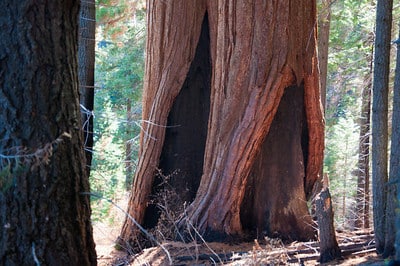
Scars from fires long past
Looking back toward a sequoia grove from the hillside with the burned saplings, I got a good look at a fairly mature tree. More than anything, the silhouette, and to a degree the color of the foliage, reminded me of eucalyptus, ubiquitous Australian trees found throughout the Bay Area. The tallest eucalyptus often grow taller than sequoia, matching the sequoia’s cousin the coast redwood, Sequoia sempervirens. I’m a fan of each of these tall varieties.
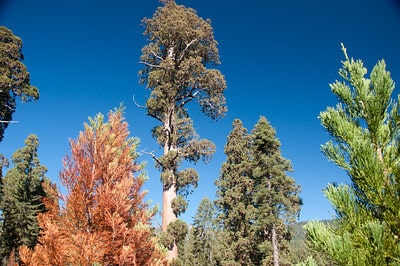
Sequoia and deep blue sky
I highly recommend a visit to the park. There are plenty of big trees to see and most are half a day’s drive from San Francisco.
Subscribe to Bonsai Tonight
New Posts Delivered Every Tuesday and Friday
Alex V says
Fire moves quickly up hill, but burning brush and logs roll down hill. They probably get caught at the base and burn the trunk, since it would require being exposed to fire for a good deal of time since the bark is fire resistant. You wouldn’t get burning debris accumulating at the base of the downhill side, so it doesn’t burn there.
Bridget says
Awesome trees…beautiful pictures.
Laurel says
The mature sequoias depend on fire to burn out carpenter ant nests in their bark and exposed wood.
Houston Sanders says
Thanks for the interesting post. I looked up the explanation for scars only on the uphill side, and found this:
“90 percent of Giant Sequoia scars occur on the uphill side where trees grow on slopes and 90 percent fall uphill toward their undermined side. Branches and debris rolling downhill through the centuries collect in fuel piles at the uphill tree bases and burn into the trees’ heartwood, destroying surface roots and weakening mechanical support.”
(California Forests and Woodlands: A Natural History, Verna R. Johnston, p121)